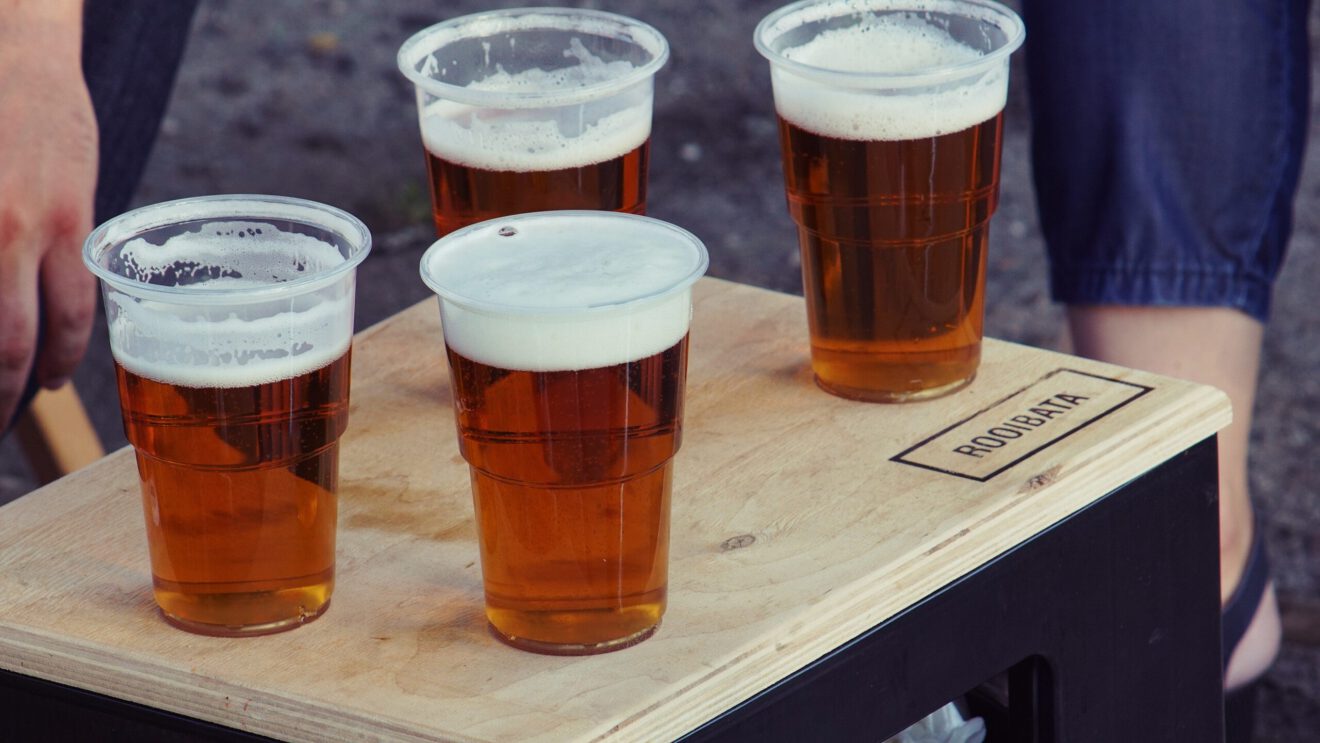The onset of the coronavirus pandemic and the sudden lockdowns that followed ushered in a seismic shift in consumer behavior and unexpected changes in the food and beverage industry landscape. Many homebound Americans began drinking more alcohol — a trend that has remained steady for the past several months.
While food retailers have seen a boost in alcohol sales, restaurants are understandably struggling with new operating models and government restrictions. Where do alcohol sales currently stand? What trends have come out of the pandemic-induced rise in alcohol consumption? And what is the industry doing to keep up the momentum or shift gears?
A look at the statistics
While numbers show that Americans were already drinking more before the pandemic struck, there was a sizable increase in the amount of alcohol being purchased when lockdowns went into place across the country. Nielsen reported a 55% increase in alcohol sales for the week ending March 21, and as of April 18, online alcohol sales rose 234%. By the end of October, companies were reporting major increases in online beer sales, with Molson Coors seeing a 200% increase in US e-commerce sales.
As for grocers specifically, the pandemic has pushed alcohol sales up to their highest market share in five years, data from IRI shows. The shutdowns or restrictions that have affected many bars and restaurants are among the key drivers of the trend, along with the expanded ability to order alcohol online for pickup or delivery and the increased use of data to shape alcohol sales strategies.
While there was an obvious shift from restaurant alcohol sales to grocery sales during the early stages of the pandemic, Nielsen found a notable uptick in the number of consumers ordering alcoholic beverages along with their takeout. Additionally, 45% of consumers preferred ordering takeout/delivery alcohol directly from restaurants or bars.
Indeed, pandemic drinking shows very few signs of slowing down. Last month, the journal JAMA Network Open published a report stating that Americans were drinking alcohol 14% more often during the pandemic, with women at an even higher 17%.
Pandemic-induced alcohol trends
Along with the increase in alcohol consumption has come a spate of new consumer trends that have had a direct impact on restaurants, bars, grocers and manufacturers. Among trends identified by Albertsons’ Own Brands drinks executives Jose Rodriguez and Maryrose Rinella are lower-alcohol options, premiumization and canned and ready-to-drink options.
“One of our biggest growth innovation items for the last year has been our barrel-fermented Creamery Chardonnay,” Rodriguez told Store Brands. “Due to the item’s success, we recently launched the wine in a 375ml canned wine format to extend use occasions.”
Boxed wine has also been a hit for stay-at-home consumers thanks to its convenience factor and longer shelf life, with year-over-year sales surging 36% for the 15-week period ending June 13, wrote Bill Ward for the Star Tribune. Hard seltzer is also having a heyday, with Nielsen finding that pandemic-era sales of the beverage are far outpacing those from 2019.
Further, consumers are showing great interest in craft cocktail delivery. Executives from three Austin, Texas, craft cocktail delivery services, for example, have reported sales surges during the pandemic. Sourced Cocktails CEO and founder Tim Angelillo said the company has grown close to 800% this year, while HipStirs Sales Director Kylie Chapman said the startup has successfully partnered with Drizly and various restaurants.
Shifts throughout the food and beverage industry
All of these consumer shifts and burgeoning trends have caused the industry as a whole — and even state governments — to make changes to the way they do business. Several states have made it legal for restaurants and bars to sell alcoholic beverages with takeout orders, and Ohio even took it one step further by making the change permanent.
In order to reach wine and spirits fans, the New Hampshire Liquor Control Commission is offering a three-month lineup of virtual events called “90 Days Around the World,” featuring virtual distillery tours, cocktail classes and guided tastings.
As for restaurants and bars, a little creativity has gone a long way in ensuring alcohol sales and keeping customers involved. Timber Hill Winery in Milton, Wis., for example, installed two 10-foot clear, heated igloo-like domes furnished with comfortable couches and chairs on its patio. New York sommelier James Sligh started a virtual education program after he was laid off in March, and an outdoor pop-up cocktail bar and restaurant called Gin Alley opened in an alleyway in Portland, Ore., while the bar next door was forced to remain closed.
Panera Bread, meanwhile, is testing a first-of-its-kind beer and wine menu at five of its franchised units in the Kansas City, Mo., market in partnership with Boulevard Brewing and Menage a Trois Wines.
“Given the environment over the last six months we’ve been challenged to think differently about our business,” Randy Bates of Flynn Restaurant Group told Nation’s Restaurant News. “This is one of the areas we believe is a growth opportunity for our brand.”
Related stories:
- Shifts in food shopping behaviors due to COVID-19
- Resilient restaurateurs press on with new eateries optimized for uncertain times
- What’s trending for the future of food?
_____________________________________
If you enjoyed this article, you can sign up for Consumer Brands SmartBrief, FMI dailyLead or Restaurant SmartBrief to get news like this in your inbox. For even more great news content, sign up for any of SmartBrief’s 275+ free email newsletters today, free.
